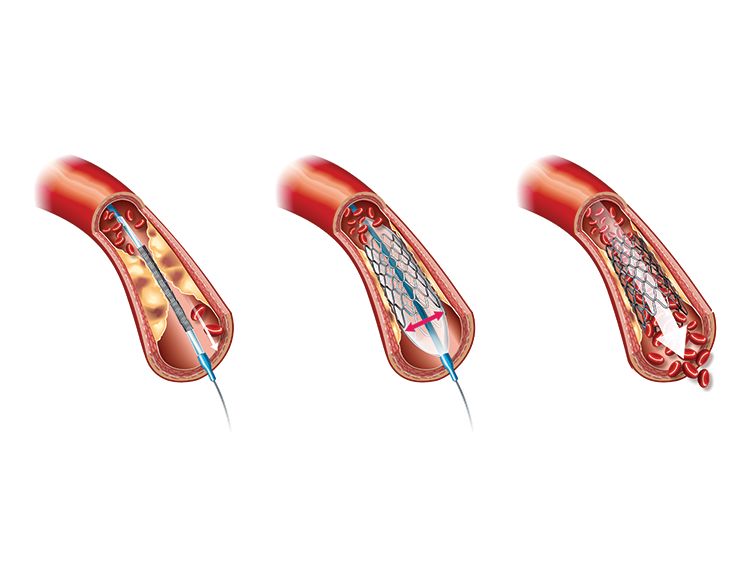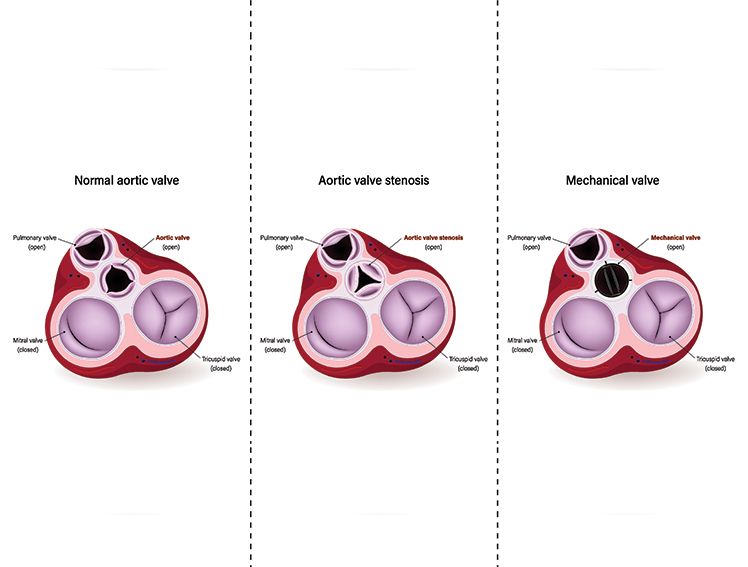
8 Lifestyle changes to be adopted after Angioplasty
Understanding Angioplasty and Stent Implantation & How life changes after the procedure
The human body can withstand a lot of things. However, as people age, their bodies also start becoming weaker. The years of wear and tear start affecting the body. Sometimes, it becomes imminent for people to undergo several treatments, including various non-invasive procedures and invasive surgeries. And while your life can go back to the regular routine after any procedure, it can never truly be the same. You need to change your lifestyle to a great extent to reduce any future incidents that can have a more severe effect on your body. Angioplasty and stent implantation are non-invasive procedures that help blood flow better, keep your heart healthy, and reduce heart attack risks. This patient-friendly guide explains these procedures, shares the latest stent advancements, and offers easy tips for a healthier life after angioplasty.
What is angioplasty?
Angioplasty is essentially a minimally invasive procedure. In this procedure, the interventional cardiologist removes the blockage from the artery to ensure a smooth flow of blood and that the heart muscles get enough oxygen. Blocked and narrowed arteries can cause heart attacks, and angioplasty reduces the risk of heart attacks by restoring the proper blood and oxygen supply to the heart.
A doctor inserts a tiny tube with a small balloon through a small cut in your arm or groin. When it reaches the blockage, the balloon inflates, pushing the blockage aside so blood can flow again. It’s less invasive than open-heart surgery, and most people return to everyday life after angioplasty within a few days.
Compared to invasive bypass surgery, angioplasty is a minimally invasive procedure that is quicker and less painful. Depending on your doctor's advice, you can return to normal life within just 2-3 days. While angioplasty is highly effective, the key to long-term heart health lies in the lifestyle changes you make following the procedure.
What is a stent implant?
Most patients who undergo an angioplasty procedure also have to undergo stent implantation. A stent is a small, latticed metal scaffold introduced into the patient’s blood vessel on a balloon catheter, a metal mesh tube that keeps the artery open. Most modern stents have a drug coating on them for better clinical outcomes in the long run to stop the artery from closing again. These drug-eluting stents (DES) release medicine to prevent re-narrowing. A stent is essentially a small, latticed metal scaffold that is introduced into the patient’s blood vessel on a balloon catheter. Most modern stents have a drug coating on them for better clinical outcomes in the long run. The type of stent used depends on the patient’s condition as assessed by the interventional cardiologist. The stent is chosen based on the location of where it is to be inserted and the condition of the narrowing in the patient’s coronary artery. The operator then plots the catheter into the blocked artery, after which he inflates the balloon upon which the stent is crimped. Upon balloon inflation, the stent starts to expand outwards towards the vessel wall. The balloon is then deflated and withdrawn, and the stent stays in its place permanently. It holds the blood vessel lumen open and improves the blood flow. The stent is placed using the same balloon tube. The balloon inflates, the stent expands, and it stays in place to keep blood flowing smoothly. This supports a healthier life after angioplasty.
An Interventional cardiologist may insert one or more of these stents, depending upon the number of blockages. While Meril offers various DES stents that assist with early vascular healing, the Evermine50 stent is a breakthrough in DES technology. It uses the clinically established drug everolimus, a biodegradable polymer with an Ultra-low strut thickness of 50μm, and a hybrid cell stent design.
Lifestyle changes after angioplasty
The post-procedure recovery period can indeed be long, and the body can take its time to slowly and steadily regain its strength. It is essential that patients make steady improvements with every passing day, and adopt some additional, necessary measures. Recovery from angioplasty takes time, but small changes can make a big difference. These lifestyle changes after angioplasty help protect your heart and boost your life. Here are eight easy steps to follow:
The patient must quit smoking
Life after angioplasty strictly involves smoking cessation. Smoking can damage the artery lining and also cause fat to build up. This, in turn, causes the narrowing of the artery and hampers the blood flow in the body harming your arteries and increasing the risk of heart disease. Both active and passive smokers (people in close physical contact with active smokers) are highly likely to develop more severe heart conditions due to exposure to smoke.The patient must take medications and consult the doctor in case of irregularities
After the angioplasty, the doctor typically advises the patient to take certain medicines that are meant to enhance heart recovery and regain body strength. As such, patients must be vigilant and ensure that they do not miss a single dose of their medication. Typically, the doctor may prescribe medicines that serve as blood thinners, which are meant to ease the flow of blood, along with thrombolytics, which dissolve clots, nitroglycerine, which widens blood vessels, etc. The doctor may also prescribe painkillers so that the patient can manage the pain. When patients take these medications, they may experience a few side effects, which should be discussed with the doctor before discharge. Patients should immediately consult the doctor if they notice any discussed side effects or have any doubts, so that the doctor can review and address issues immediately. Take medicines like blood thinners or cholesterol-lowering drugs as prescribed. They help your heart stay healthy.- The patient must follow a healthy diet
Another critical lifestyle change after angioplasty that one must adapt is following a healthy diet.. As such, some strict diet changes may be in order. Patients are most often advised to avoid unhealthy foods containing high levels of sodium, cholesterol, trans-fats, and saturated fats, and so on. The diet should include foods rich in iron and essential vitamins such as green leafy vegetables, whole grains, fish, low-fat dairy, fibre, dry fruits, etc. Essentially, the patient must ensure that the foods they consume are nutritionally balanced as advised by a dietitian or other healthcare professional involved in the treatment. Eat heart-healthy foods to keep your heart strong:- Choose fruits, veggies, whole grains, fish, low-fat dairy, and nuts.
Skip salty snacks, fried foods, and sugary treats. A dietitian can help you plan meals for life after angioplasty.
The patient must consider taking up more physical activities
One of the most common causes of heart problems is that most patients are physically inactive. As such, once the heart condition is cured through angioplasty or stent implant, patients must ensure that they increase their physical activities as per due guidance from doctors. Being inactive hurts your heart. Start moving to stay healthy. You can start with low to moderate physical activities like walking short distances or going up and down the stairs twice or thrice daily. They can also consider light stretching exercises and aerobics. Try to get 150 minutes of moderate exercise per week, like brisk walking or light cycling. However, one must avoid all strenuous workouts, such as lifting anything heavier than 5 kilograms, for at least six weeks after the procedure. Patients must also consult their doctor before resuming sexual activity.Obese patients must manage their weight
Weight management is another crucial lifestyle change after angioplasty that one mustn’t ignore, especially if one is obese. Weight management is directly linked to heart management. Cardiac arrests are often caused by obesity, which is why one must take the necessary steps to address obesity. Weight can be managed by combining physical activities and maintaining a healthy diet. The patient must regulate the intake of calories. However, they must avoid crash diets. Instead, they can introduce nutritional foods like vegetables and fruits into their everyday diet to maintain their weight naturally. Eat balanced meals and stay active to lose your body weight. This can lower blood pressure and cholesterol. Avoid crash diets and focus on veggies and fruits.The patient must take the necessary steps to reduce stress levels
Stress of any kind is not good for the heart. Increased stress levels can aggravate heart conditions, cause blood pressure problems, and damage the arteries. These conditions, in turn, lead to surgeries like angioplasty. As such, patients must take the necessary steps to reduce their stress levels. An excellent way to manage stress is to practice relaxation techniques such as yoga and meditation, or take up hobbies that can reduce overall stress and assist in maintaining heart health.The patient must limit alcohol intake
Life after stent placement should have no room for excessive alcohol. Patients must strictly limit their alcohol consumption. Excessive consumption of alcohol can lead to a wide variety of health complications – from increased blood pressure to strokes, irregular heartbeats, and cardiomyopathy or heart muscle diseases. High consumption of alcohol also contributes to health issues such as obesity, fatigue, and strokes, all of which can trigger heart problems again.- The patient must go for regular follow-ups
Patients who undergo angioplasty and stent placement must ensure that they follow up with their doctors regularly. They should not miss any check-ups and also keep an eye on their cholesterol and blood sugar levels. They must consult their doctors if they notice even a small change or if they experience any sudden or inexplicable pains. Check-ups help keep your heart healthy. Monitor cholesterol and blood pressure. Report any chest discomfort to your healthcare provider immediately to protect your life after angioplasty.
Final note
Angioplasty procedures do not involve any significant incisions as they are minimally invasive to the body. Depending on the doctors' recommendations, once return to their normal routine within 2 to 3 days after the procedure. However, patients undergoing this procedure must follow the above-mentioned lifestyle changes to lead a long and healthy life after stent placement. Follow these lifestyle changes after angioplasty to keep your heart strong.



